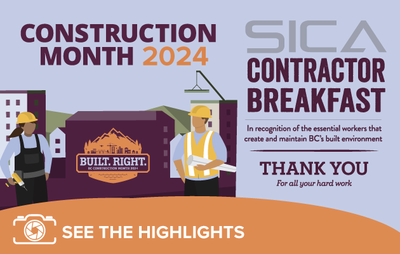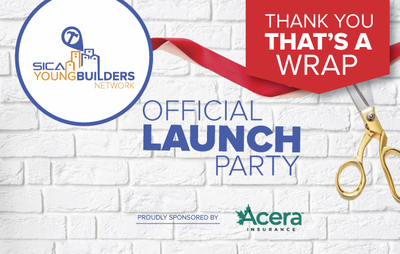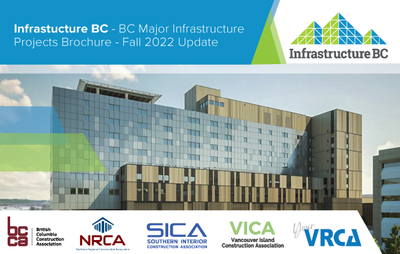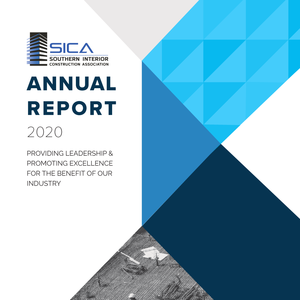
Unlocking Efficiency and Innovation: The Power of Building Information Modelling (BIM)
Unlocking Efficiency and Innovation: The Power of Building Information Modelling (BIM)
Building Information Modelling (BIM) is a game-changer in today’s construction world. It transforms everything about projects: how they’re planned, executed, and operated later on. This isn’t just another tool though — it’s more like a new way of thinking; one that makes things faster while improving quality too. It helps people work together better, BIM doesn’t stop at the design phase either – everyone from architects to contractors can use it throughout construction and public owners can use it into maintenance as well if necessary. So with all these benefits waiting for them, no wonder so many companies now employ BIM systems!
Here, we explore the key points of BIM and its profound benefits.
1. Enhanced Collaboration and Coordination
BIM fosters seamless collaboration among architects, engineers, contractors, and stakeholders by centralizing project data in a digital model. This shared platform facilitates real-time communication, minimizes errors, and ensures everyone works with the same accurate information. Teams can identify clashes and conflicts before construction begins, reducing costly revisions during the build phase.
2. Improved Design Visualization and Simulation
With BIM, stakeholders can visualize a project in 3D, offering a comprehensive understanding of the design. This clarity enables better decision-making, allowing for design alterations and optimizations at early stages. Additionally, BIM supports simulations for energy performance, structural analysis, and construction sequencing, leading to more efficient and sustainable designs.
3. Cost and Time Savings
Using BIM can make a difference in cutting project costs and timelines. By catching clashes early, fine-tuning construction sequences, and streamlining prefabrication, BIM helps us avoid rework and material wastage. This means projects get done quicker and with fewer surprises, boosting profitability across the board.
4. Lifecycle Management and Maintenance
BIM extends its benefits beyond construction to facility management. The digital model becomes a valuable asset throughout the building's lifecycle, aiding in maintenance, renovations, and future expansions. Access to detailed information about components and systems improves operational efficiency and reduces long-term costs.
5. Regulatory Compliance and Risk Mitigation
BIM supports compliance with building codes and regulations by embedding data related to safety, accessibility, and environmental standards into the model. This proactive approach reduces risks associated with non-compliance and enhances project resilience.
6. Sustainability and Green Building
BIM plays a crucial role in promoting sustainable practices. By enabling energy analysis, material efficiency assessments, and life cycle assessments, BIM empowers designers to create environmentally conscious buildings. This aligns with the growing demand for green construction solutions.
7. Client Engagement and Communication
BIM enhances client engagement by offering immersive visualizations and clear project insights. Clients can better understand design concepts, make informed decisions, and actively participate in the development process, leading to increased satisfaction and project success.
Embracing the Future with BIM
By leveraging BIM technology, project teams not only meet government and organizational sustainability targets but also unlock substantial benefits for contractors. BIM plays a crucial role in advancing sustainability within construction projects.
During the design phase, BIM empowers architects and engineers with deep insights into energy performance. This means they can explore various strategies to enhance energy efficiency, from heating and cooling systems to insulation and daylighting. By simulating these factors early on, BIM enables informed decisions that lead to long-term cost savings for contractors.
Furthermore, BIM facilitates informed choices about materials, considering environmental impacts like embodied carbon and recyclability. This helps contractors select sustainable materials and meet certification requirements more efficiently.
In construction, BIM minimizes waste by enabling off-site prefabrication of optimized building components. This approach not only enhances precision during planning but also reduces material transportation emissions, aligning with sustainable development goals.
Beyond construction, BIM supports facility management by providing ongoing insights into energy consumption and maintenance needs. This capability allows building owners to optimize performance post-completion, driving operational efficiency and reducing environmental footprints over time.
Imagine a typical day for a General Contractor leveraging Building Information Modelling (BIM) software like Autodesk Revit or Trimble Tekla Structures.
In the morning, the contractor starts by accessing the BIM model to review project progress and identify any clashes or coordination issues that emerged overnight. Using the 3D model, they conduct virtual walkthroughs to visualize construction sequences and optimize workflows.
Throughout the day, the contractor utilizes BIM for task scheduling, material procurement, and subcontractor coordination, ensuring seamless project management. During meetings with the project team, the contractor shares real-time updates from the BIM model, fostering clear communication and informed decision-making.
In the afternoon, the contractor uses BIM to generate accurate quantity takeoffs and construction documentation, enhancing precision and efficiency in project delivery.
By the end of the day, the contractor relies on BIM to monitor project milestones, track progress, and proactively address any challenges, ensuring that the construction process remains on schedule and within budget. BIM is an invaluable tool for the General Contractor, facilitating daily tasks and optimizing project outcomes through enhanced coordination and collaboration.
BIM Software
There are several Building Information Modelling (BIM) software products available, each offering unique features and capabilities tailored to different aspects of the construction lifecycle. Here are some examples of popular BIM products widely used in the industry:
Architectural Firms
Architectural firms rely on comprehensive BIM software like Autodesk Revit and Graphisoft Archicad to create accurate 3D models, conduct design simulations, and collaborate with other disciplines seamlessly.
Engineering Firms
Civil, structural, mechanical, and electrical engineering firms leverage specialized BIM tools such as Bentley AECOsim Building Designer and Trimble Tekla Structures for detailed design, analysis, and coordination of building systems.
General Contractors
General contractors benefit from BIM platforms like Autodesk Revit and Trimble Tekla Structures to visualize and manage construction processes, detect clashes, sequence activities, and improve overall project efficiency.
Specialty Contractors (e.g., HVAC, electrical, plumbing)
Specialty contractors use BIM applications tailored to their disciplines, such as Autodesk Revit for MEP (mechanical, electrical, plumbing) coordination and modeling, to ensure detailed coordination within the project context.
Construction Management Firms
Construction management firms utilize BIM software like Bentley AECOsim Building Designer and Autodesk BIM 360 for project scheduling, logistics planning, and subcontractor coordination, enhancing communication and collaboration.
Real Estate Developers
Real estate developers leverage versatile BIM tools like Vectorworks Architect for feasibility studies, project visualization, and marketing purposes, aiding in informed decision-making throughout project design and construction phases.
Facility Owners and Operators
Building owners and operators use BIM platforms such as Autodesk BIM 360 and Archibus for facility management tasks, including maintenance planning, space utilization analysis, and asset management over the building lifecycle.
Prefabrication and Modular Construction Companies
Prefabrication and modular construction companies rely on BIM solutions like Autodesk Revit and Tekla Structures for precise design and fabrication of building components off-site, optimizing manufacturing and assembly processes.
Government Agencies and Public Infrastructure Projects
Government agencies utilize specialized BIM applications such as Autodesk Civil 3D and Bentley MicroStation for public infrastructure projects, enhancing project coordination, data management, and asset lifecycle management for roads, bridges, and utilities.
BIM products cater to specific needs within each construction sector, empowering businesses to streamline workflows, improve collaboration, and deliver successful projects from design to facility management. The versatility and functionality of BIM software contribute significantly to enhancing efficiency and productivity across the construction industry.
Reducing Construction Environmental Impact
By integrating BIM technology into project workflows, construction teams can optimize designs, enhance energy efficiency, and reduce environmental impacts without incurring significant costs or complications. BIM enables proactive identification of sustainability opportunities, such as material efficiency improvements and energy-saving strategies, during the early stages of project development. This streamlined approach minimizes environmental footprints and contributes to cost savings and operational efficiencies throughout the construction lifecycle. As the industry continues to leverage BIM for sustainable practices, we are witnessing a positive transformation towards greener and more eco-friendly construction practices, all achieved with minimal hassle and maximum impact.
Building Better Government Action
Explore Green Building Projects Map [Pembina Institute]
| BIM Software | Key Features | Customer Ratings (out of 5) |
| Autodesk Revit | 3D modeling and visualization- Collaboration tools- Clash detection - Structural and MEP design | 4.5 |
| Bentley AECOsim | Interoperability with other platforms - Parametric modeling - Quantity takeoff - Project coordination | 4.2 |
| Trimble Tekla | Structural detailing - Steel and concrete modeling - Clash checking - Fabrication management | 4.3 |
| Vectorworks Architect | BIM modeling - Rendering and visualization - Construction documentation - Landmark tools | 4.6 |
| ArchiCAD | Intelligent object-based BIM - Interoperability - Energy analysis - 3D visualization | 4.4 |
| FreeCAD | - Parametric modeling - 2D drafting - BIM tools (limited compared to commercial software) | 4.0 |
| OpenStudio | - Energy modeling - Integration with BIM platforms - Performance analysis for building design | 4.2 |

.png)
BC Government Releases Standardized Housing Designs

BCCA Industry Alert

WorkSafeBC Press Release

SICA Golf Tournament June 7th 2024

Unlocking Efficiency and Innovation: The Power of Building Information Modelling (BIM)

SICA Contractor's Breakfast 2024

BC Budget 2024

Revolutionizing Canada's Construction Industry: The Federal Prompt Payment Legislation

Young Builders Launch Party Wrap Up

CCO Workshop 2024

Membership Appreciation Evening Wrap Up 2023

CCA Hill Day 2023

EBT Flu Clinic Dates

SICA Golf Tournament September 2023

Long Term Members 2022/2023
.png)
Trap & Skeet 2023 Wrap-up

SICA Golf Tournament June 23rd 2023

Industry Awards of Excellence

BC Land Title & Survey Online Filing Process


Join the Virtual Webinar
.png)
The SICA September Golf Tournament was a hit!


Farewell to our Education Admin and Hello to our new SICA staff 2022

CCO Workshop 2022
.png)
MOTI and Infrastructure BC Seeking Interest From Qualified Firms For BC Highway Reinstatement Program RFQ
Prompt Payment Included in ‘Report on the Budget 2022 Consultation’

Regional Construction Associations Partner with BCCA Employee Benefit Trust to Provide Flu Shots for Industry

B.C. associations call on province to practice fair, transparent procurement

SICA announces 2020/2021 Industry Awards of Excellence Finalists

2021 Annual Report

Kelowna Crane Incident Legacy Education Fund

#Hangahighvisoutside

Brooklyn Site Crane Accident Statement

Construction Fast Lanes for COVID-19 Vaccine

Every Child Matters - Indigenous History Month
.jpeg)
Latest Construction Industry Statistics Reveal Strength Despite Pandemic Challenges
.jpeg)
BCCA Response to BC Budget 2021
.png)
CCA Responds to 2021 Federal Budget

Construction Month 2021

BuildForce Canada releases annual 10-year forecast

SICA training courses prove practical and meaningful to students

2021 Gold Seal Program Changes

Building Forward: Virtual Conference 2021

Nomination Period Opens for SICA’s Industry Awards of Excellence

Meet SICA's 2020 New Board Members

SICA's 2020 Annual Report

COVID-19 Update
Membership Benefits
As a Member you are a part of a collective voice, the SICA voice. Together, our voice is changing the construction community and helping your business grow through advocacy, networking events, affinity programs, direct business leads and more. Our voices promotes fairness, transparency and open communication in the construction industry. Join SICA to grow your business today and be a voice for our industry tomorrow.
JOIN NOW